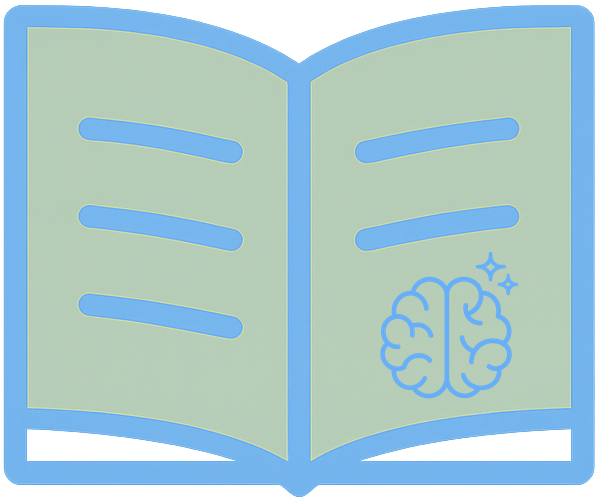Ghosts in the Machine: AI, Memory, and the Architecture of Recall
Memory shapes intelligence—human and artificial alike. In brains, it’s adaptive and fallible; in AI, it’s precise yet indiscriminate. As we design systems that remember and forget, we’re deciding not just how machines store data, but how future intelligence will think.
Memory is the quiet engine of intelligence. Without it, reasoning collapses into random noise, creativity loses its thread, and learning becomes impossible. For humans, memory is not a perfect ledger—it is dynamic, reconstructive, and deeply entangled with emotion and context. For artificial intelligence, memory is both simpler and stranger: a lattice of mathematical weights, vector spaces, and storage buffers. Yet, as AI systems grow more capable, their relationship to memory is starting to resemble our own—raising profound questions about what it means to remember, to forget, and to change.
The Biological Blueprint: Memory in the Brain
Neuroscience divides human memory into overlapping systems:
- Sensory memory captures the raw echo of experience for fractions of a second.
- Working memory holds active thoughts, juggling information in the prefrontal cortex.
- Long-term memory stores the vast and mutable archive of our lives, from facts and skills to personal narratives.
These systems are not static hard drives. Synaptic connections are constantly strengthened, weakened, or rewired through processes like long-term potentiation (LTP) and synaptic pruning. Memory retrieval itself changes the memory—a quirk of biology that makes human recall both flexible and fallible.
This plasticity is a feature, not a bug. It allows adaptation, reinterpretation, and integration of new experiences into old frameworks. But it also opens the door to distortion, bias, and forgetting.
The Computational Counterpart: Memory in AI
Artificial memory takes many forms depending on the architecture:
- Parametric memory is baked directly into model weights during training, as in large language models.
- External memory modules—such as vector databases—store retrievable embeddings outside the model, akin to a digital hippocampus.
- Short-term context buffers (e.g., the “attention window” in transformers) serve as a kind of working memory, holding recent conversation or computation.
Unlike humans, AI memory can be perfectly duplicated, wiped, or augmented at will. A model’s “memories” can be made searchable, shareable, and even merged with another system’s. But AI also lacks the organic decay that gives human memory its prioritization—without deliberate design, it may recall irrelevant details as readily as crucial ones.
Converging Functions, Diverging Natures
The parallels between AI and human memory are striking, yet the differences are instructive.
- Encoding: Humans compress experience into neural patterns; AI encodes data into numerical representations.
- Storage: Humans cannot consciously choose which memories are stored; AI can be engineered for selective retention.
- Retrieval: Human recall is reconstructive and context-dependent; AI retrieval is often exact but can fail if the query is poorly matched to its index.
Interestingly, both systems grapple with catastrophic forgetting—in humans, through interference between memories; in AI, when new training overwrites older learned representations.
The Ethics of Artificial Forgetting
As AI systems accumulate memories—especially those tied to individuals—the question of when to forget becomes critical.
Should an AI personal assistant be able to erase all traces of your past queries at your request?
Should a medical diagnostic AI “forget” outdated guidelines to avoid perpetuating obsolete practices?
These are not just technical questions—they are ethical choices about permanence, privacy, and control.
In human life, forgetting is part of healing. In AI, forgetting is often treated as a bug to be fixed. Perhaps the future lies in engineered forgetting—algorithms that mimic the selective decay and emotional weighting of human memory.
Toward Hybrid Memory Architectures
The most intriguing frontier may be hybrid memory systems that blend the adaptability of biological memory with the precision and scalability of machine memory. Imagine a cognitive partner that can:
- Recall every relevant fact you’ve ever needed.
- Forget sensitive data after it has served its purpose.
- Adapt memories in light of new evidence.
- Weight memories according to emotional or contextual significance.
Such systems could become not just databases, but collaborators in thought—mirrors that reflect and expand our own cognitive processes.
Conclusion: Remembering the Future
The intersection of AI and memory is not just a technical challenge—it’s a philosophical one. If intelligence is the ability to make sense of the present using the past, then the design of memory is the design of thought itself.
In building machines that remember, we are also redefining what it means to preserve, to alter, and to let go. The ghosts in the machine are not just echoes of past data—they are the scaffolds of the future
